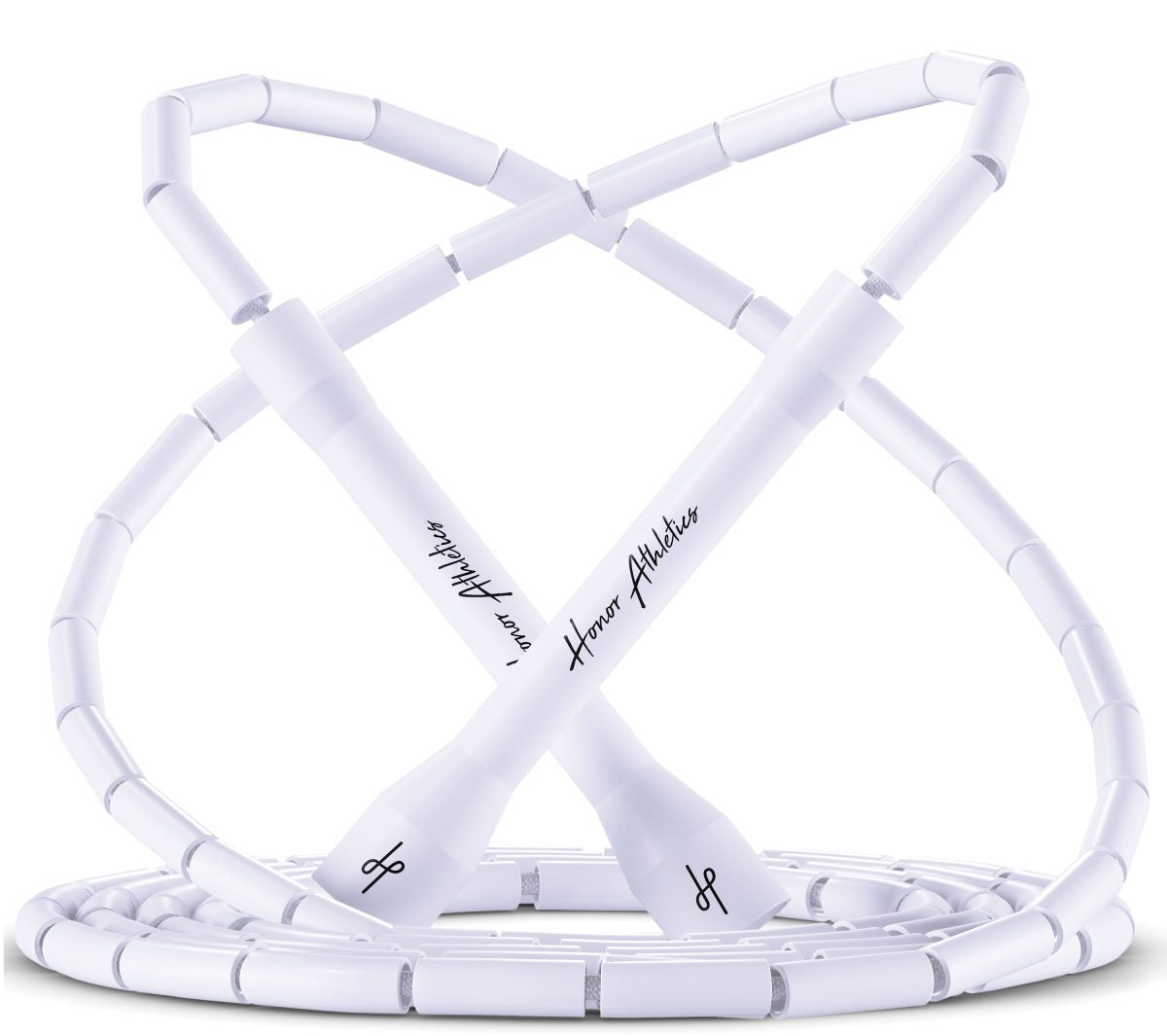
8 Muscles, One Rope
Which Muscles Does Jump Rope Work? 8 Key Muscle Groups Activated
Unlock the secret behind a single piece of equipment! Discover how jumping rope strengthens 8 muscle areas—from calves to shoulders—and elevate your full-body workout.
What if that simple rope you remember from childhood held the key to activating hidden muscle power from head to toe? While many dismiss jump rope as mere cardio, each precise skip recruits eight major muscle groups in a single fluid motion. Curious how a few minutes of rope skipping can outperform hours on traditional gym machines? Read on to uncover the muscle-building magic behind every jump.

1. Calves (Gastrocnemius & Soleus)

Your calves bear the brunt of every jump:
- Gastrocnemius: The outer, fast-twitch muscle powering explosive leaps.
- Soleus: The deeper, endurance-focused muscle that keeps you going during longer sessions.
A high-tempo 10-minute session can burn 10–15 calories per minute while sculpting these key lower-leg fibers.
2. Quadriceps

The four-headed quads extend your knee and drive each upward thrust:
-
Vastus medialis, lateralis, intermedius, and rectus femoris contract in unison for powerful lifts.
Jump rope enhances quad endurance, translating to better performance in squats, sprints, and stairs.
3. Hamstrings

During both the takeoff and landing phases, your hamstrings engage eccentrically and concentrically:
- Biceps femoris, semitendinosus, and semimembranosus stabilize knee flexion and hip extension, reducing injury risk and enhancing balance.
4. Glutes (Gluteus Maximus, Medius, Minimus)

Your glutes power the thrust phase and stabilize laterally:
- Gluteus maximus: The engine of upward propulsion.
- Gluteus medius & minimus: Key for hip stability and single-leg variations.
Strong glutes support spinal health and overall athleticism.
5. Core (Abdominals & Lower Back)

Jump rope demands constant core engagement:
- Rectus abdominis & obliques: Maintain posture and absorb shock.
- Transversus abdominis: Stabilizes internal pressure for a tight midsection.
A fortified core improves posture, reduces back pain, and boosts overall stability.
6. Shoulders and Arms

Though subtle, your upper body isn’t idle:
- Deltoids: Control rope rotation and shoulder lift.
- Biceps & triceps: Manage handle movement and elbow position.
- Forearms: Provide grip strength and wrist stability.
Faster, more advanced skipping intensifies upper-body endurance.
7. Upper Back and Chest

Advanced techniques (double-unders, criss‑cross) recruit these regions:
- Trapezius & rhomboids: Stabilize shoulder blades.
- Pectoralis major: Supports arm drive and control movements.
Weighted ropes amplify these effects, sculpting your upper torso.
8. Ankles and Tendons

Every skip challenges your ankles and Achilles tendons:
-
Controlled landings on the balls of your feet (2–3 inches off the ground) build tendon resilience.
Poor technique can overload these structures and slow progress.
Tips for Maximizing Muscle Activation
- Add Variations: High knees, side swings, double‑unders to target muscles differently.
- Use a Weighted Rope: Increase upper‑body load and calorie burn.
- Employ HIIT Format: 30 seconds fast, 30 seconds easy for cardio and muscle endurance.
- Stretch & Mobilize: Focus on calves, hips, and shoulders to prevent tightness and injury.
- Discount Code Advantage: Use the code WEIGHTED5 on your Weighted Jump Rope purchases to get 5% off and take your workouts to the next level with premium equipment! 🏋️♂️🔥
Conclusion
Jump rope offers a complete muscle‑building solution with minimal equipment. In a single session, you can strengthen calves, quads, hamstrings, glutes, core, shoulders, back, and ankle tendons—achieving a full‑body workout in minutes. Grab your rope, perfect your form, and start activating all eight key muscle groups today!

Prev post

Speed, Weighted & Beaded Compared
Updated on 05 August 2025
Next post

Pain-Free Jump Rope Guide
Updated on 15 July 2025



